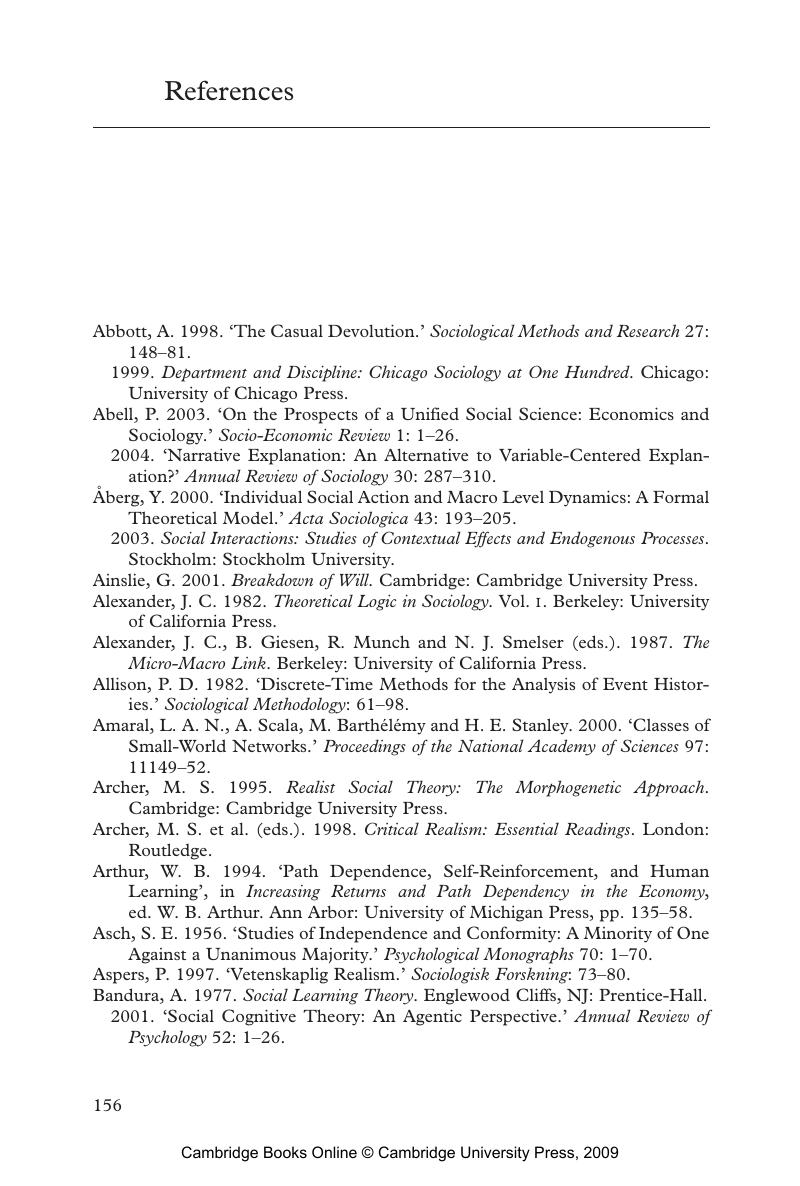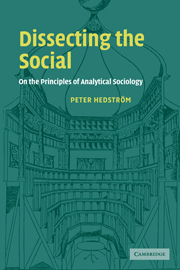Book contents
- Frontmatter
- Contents
- List of figures
- List of tables
- Preface
- 1 The analytical tradition in sociology
- 2 Social mechanisms and explanatory theory
- 3 Action and interaction
- 4 Social interaction and social change
- 5 On causal modelling
- 6 Quantitative research, agent-based modelling and theories of the social (with Yvonne Åberg)
- 7 Coda
- References
- Index
- References
References
Published online by Cambridge University Press: 22 September 2009
- Frontmatter
- Contents
- List of figures
- List of tables
- Preface
- 1 The analytical tradition in sociology
- 2 Social mechanisms and explanatory theory
- 3 Action and interaction
- 4 Social interaction and social change
- 5 On causal modelling
- 6 Quantitative research, agent-based modelling and theories of the social (with Yvonne Åberg)
- 7 Coda
- References
- Index
- References
Summary

Information
- Type
- Chapter
- Information
- Dissecting the SocialOn the Principles of Analytical Sociology, pp. 156 - 169Publisher: Cambridge University PressPrint publication year: 2005
